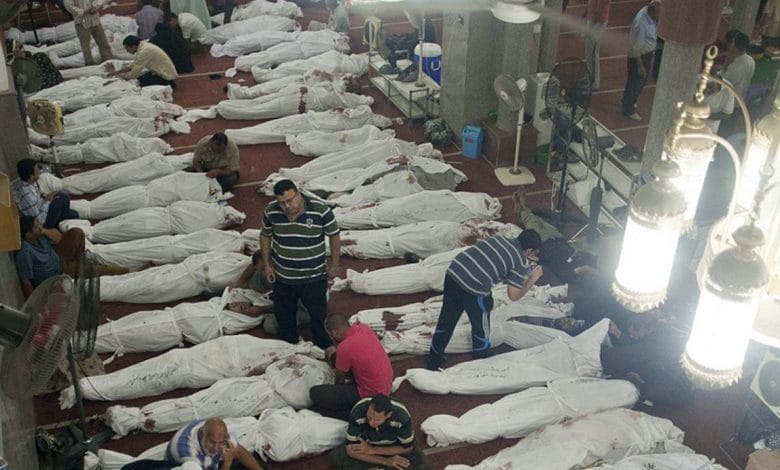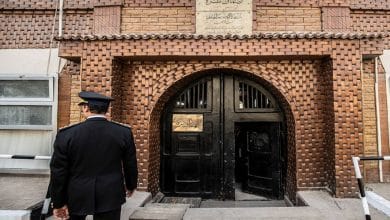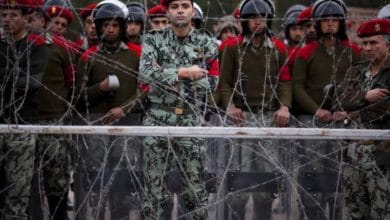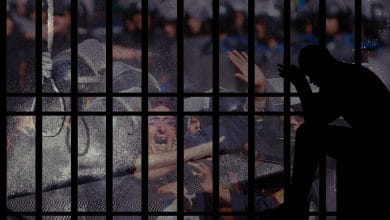
Although seven years have passed since the Rabaa massacre took place on August 14, 2013, however, perpetrators of this brutal massacre have not yet been held accountable.
The move to disperse the Rabaa sit-in by the Egyptian police and army forces in that bloody way and the killing of at least hundreds of the anti-military coup peaceful protesters, represents a turning point for human rights in Egypt, as the brutality in which the dispersal was carried out under the auspices of Abdel Fattah al-Sisi, the coup leader and then minister of defense, was unprecedented in the Egyptian society, in addition to the repressive practices of the security forces after that, including the enforced disappearances and extrajudicial killings, that the country has never seen before.
Conflicting numbers of casualties
Although seven years have passed since the Rabaa and al-Nahda massacres were committed by the Sisi regime, estimates of numbers of people killed and injured in the massacre that lasted for 14 hours remain largely inconsistent, whether those announced by authorities, by the ‘national alliance supporting legitimacy’, or by independent parties:
Official reports
The Egyptian Ministry of Health report on August 15, 2013 stated that the number of victims in Rabaa al-Adawiya Square was 288.
On September 13, 2013, Hisham Abdel Hamid, the spokesman for the Egyptian Forensic Medicine Authority (EFMA), said that the total number of deaths in the events of the Rabaa sit-in dispersal reached 333 cases, including 247 identified, 52 unidentified cases, and 7 cases in the ranks of security forces.
On November 5, 2013, the EFMA announced in a new official statement that the total number of victims of Rabaa sit-in dispersal was 377, including 31 unidentified bodies.
The National Council for Human Rights (NCHR), an official human rights organization established in 2003, whose members are appointed by the Egyptian government, also issued a report stating that the number of people killed in the Rabaa sit-in dispersal was 632.
On November 25, 2014, the fact-finding commission known as the June 30 fact-finding commission, headed by judge Fouad Abdel-Moneim Riad, issued its final report on the events of Rabaa and Al-Nahda sit-ins dispersal, stating that a total of 860 victims were killed.
Statements of Brotherhood and NASL
On August 15, 2013, the National Alliance Supporting Legitimacy (NASL) said that the total number of deaths in the dispersal of the Rabaa al-Adawiya square alone amounted to 2,600, the same number reported by the field hospital in Rabaa Square at the time.
Various statements were also issued by leaders of the Muslim Brotherhood (MB), including earlier statements by Dr. Mohamed El-Beltagy and Dr. Essam El-Erian, that raised the death toll to three thousand, while other MB members and leaders told Anadolu Agency that the number of victims of the sit-in dispersal reached five thousand.
Human Rights Monitoring
Wiki Thawra
In May 2014, the Wiki Thawra website estimated the death toll in the Rabaa al-Adawiya and al-Nahda events at 1,542.
Human Rights Watch
On August 20, 2013, Human Rights Watch said in a statement, that the security forces’ use of force in dispersing the Rabaa Al-Adawiya sit-in was the worst mass killing incident in modern Egyptian history, with a number of victims reaching at least 337 persons.
Human Rights Watch’s latest 188-page report, which was officially announced on August 12, 2014, reported that there were 1,150 deaths.
Amnesty International
In a statement issued on August 16, 2013, Amnesty International said, “The number of victims has exceeded six hundred after the security forces used unjustified excessive lethal force and broke their promise to allow the injured to leave the sit-in safely.”
Alkarama Foundation
On October 17, 2013, the Alkarama international foundation for human rights estimated the number of victims at 985. On January 14, 2014, a group of political activists released an electronic book entitled “Rabaa: Between Narration and Documentation”, saying that they had succeeded in documenting 825 cases of killing in the Rabaa sit-in dispersal.
Justifications for the conflicting figures
Some observers say the chaos that accompanied the dispersal of the Rabaa Al-Adawiya sit-in is the reason for these conflicting numbers, while others explain that the lack of accurate documentation of deaths was due to the fact that the field hospital records were burnt during the dispersal process when the forces set it on fire and reluctance of a number of families of victims to deliver bodies of their beloved ones to the morgue or to hospitals, in addition to burning and bulldozing other bodies, where each quarter relied in its statistics on exclusive information from their own sources.
Also, we cannot ignore the tight security grip imposed by Egyptian authorities on the families of the victims, journalists, and human rights organizations, as these practices were a major cause of the inconsistent data regarding the numbers of victims.
Arrest of victims
Immediately after the dispersal massacre, Egyptian judiciary opened an investigation into the incident that shocked the whole world, but the approach of the fact-finding commission that was formed upon a decree by then interim President Adly Mansour, and whose members were appointed by Sisi and the military institution, was keenness that no one from the army or police would be brought to justice for these crimes.
Instead, the protesters turned from victims to defendants in farcical trial, where leaders of protests were blamed for the consequences of the police and army forces’ brutal dispersal of the sit-ins. Moreover, hundreds of those who attended the sit-ins were arrested, including journalists and photographers who were covering the events, who were brought to an unfair mass trial.
This wide gap in application of justice has allowed the security forces to commit grave human rights violations, including the use of excessive lethal force and implementation of enforced disappearances, without being brought to account.
In addition, the death sentences and targeting opponents, both at home and abroad, with trumped-up charges would undermine any conclusions that there was any likely reconciliation at this time between the regime and the Brotherhood.
Attempts to erase Rabaa massacre from memory
In April 2020, during a celebration held to mark the completion of the digging work in one of the tunnels under the Suez Canal, Major General Ihab Al-Far, the head of the Armed Forces Engineering Authority (AFEA), spoke about the AFEA’s work in constructing many bridges east of Cairo, including the bridge over the Rabaa Square in Tayaran Street, Sisi angrily interrupted him twice, to confirm that the square was named after former Prosecutor General Hisham Barakat, and that it was no longer called ‘Rabaa Al-Adawiya Square’. It is to be mentioned that in 2015, the Egyptian cabinet approved changing the name of Rabaa Al-Adawiya Square to become Hisham Barakat Square.
The security services considered the Rabaa sign a rebellion sign that exposes its holder or carrier to oppression and torture. The police did not hesitate to arrest and persecute everyone who raises his hand with it or even keeps it with him, where a law was enacted stipulating conviction of everyone who carries, prints, or places the Rabaa sign on social media. Accordingly, we have seen how a teenager and his father were tried for on charges of carrying a ruler with the Rabaa sign drawn on it, how a girl pinning the Rabaa sign on her blouse was arrested, and how a group of athletes who were only waving with the Rabaa sign before cameras were detained.
Conclusion
There are justified concerns that Egypt’s anti-military coup victims may turn into “just a figure” among other figures scattered here and there, especially with the Sisi regime’s keenness on erasing the Rabaa massacre and other massacres that preceded and followed it from the memory of Egyptians, amid the weak situation of the opposition abroad, especially in the absence of adequate organization and coordination, with respect to the human rights work.
Despite the harsh scenes of the brutal dispersal of the sit-ins by the Egyptian army and security forces, there is complete absence of justice, where perpetrators are immune against accountability, even seven years after the Rabaa massacre.
The security approach that Sisi adopted since the beginning of events had clear repercussions families of victims who have become desperate of bringing perpetrators to justice, amid the repressive practices of security forces, including the extrajudicial killing, where the Ministry of Interior designates victims as “terrorists” and accuses some of them of belonging to the Sinai Province organization, and others to Hasm movement, to justify their killing.
The bloody dispersal of the Rabaa and Al-Nahda squares sit-ins that the whole world witnessed live on air, is not only a political crime, rather, it amounts to a “crime against humanity”, being the most heinous crime in Egypt’s modern history. The fact that the Rabaa massacre is a crime that will not be subject to statute of limitations must be asserted in international forums, and no legislation whatsoever may exempt perpetrators from accountability and punishment.
Despite attempts by Sisi and his regime to wipe out the Rabaa massacre from the Egyptian people’s memory, both at home and abroad, the ghost of Rabaa will continue to haunt them everywhere. Despite the brutality, murder and abuse that opponents were subjected to, the Rabaa massacre and the other massacres that Sisi’s police and army forces have committed, will remain in people’s minds and hearts until perpetrators are brought to justice, as facts of history confirm that a right is never lost, as long as someone strives to claim it.
To Read Text in PDF Format Click here.



